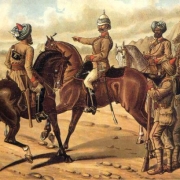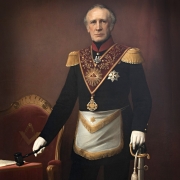
So gave Sir Harry Burnett Lumsdena British military officer stationed in Punjab, instructed his men to take off their red jackets and wear their lighter, softly woven cotton pyjama trousers instead. To better camouflage their white, pleated pyjamas, soldiers dyed them with mud and marazi (a plant native to Punjab), resulting in a drab, beige hue that blended perfectly with their sandy surroundings. They were called 'khakis', which comes either from the Hindi word धूल, meaning 'dust', or the Persian word khāk, meaning 'earth'. No one knows for sure, but it is clear that both terms aptly describe the yellowish beige colour of khakis.

"But what about khaki chinos? Khaki is not only a style of trousers, but also a colour. The stitching on khaki trousers is hidden. Khakis are generally seen as more casual because of the sturdier fabric. Trousers in khaki style have pronounced pockets; chino pockets are hidden.
Hidden pockets add to the stylish nature of a chino. Chinos have flat fronts; khakis can be flat or pleated. This is purely a matter of personal preference, but generally pleated trousers are more traditional. Pleats also help to balance out your proportions if you carry some extra weight in your midsection, or if you are quite broad-shouldered. A flat front is the more modern trouser silhouette that tends to be flattering on a slimmer body type.

However, enthusiasts have been confused ever since! The basis, however, is that khakis originated as a broad category of military trousers, and a specific subset of these evolved into chinos. Think of khakis as a thicker, more square garment, and of chinos as slimmer, more tapered and neat trousers, you're good!
Raphaël van den Poel, former fashion consultant of Scapa, Reinhard Frans and Atelier NA tailored suits,
writes our weekly blog on gentleman matters. He works for MYX Magazine, a Flemish luxury lifestyle platform.
He also has his own blog which you can read here: http://belgiandandy.blogspot.com










